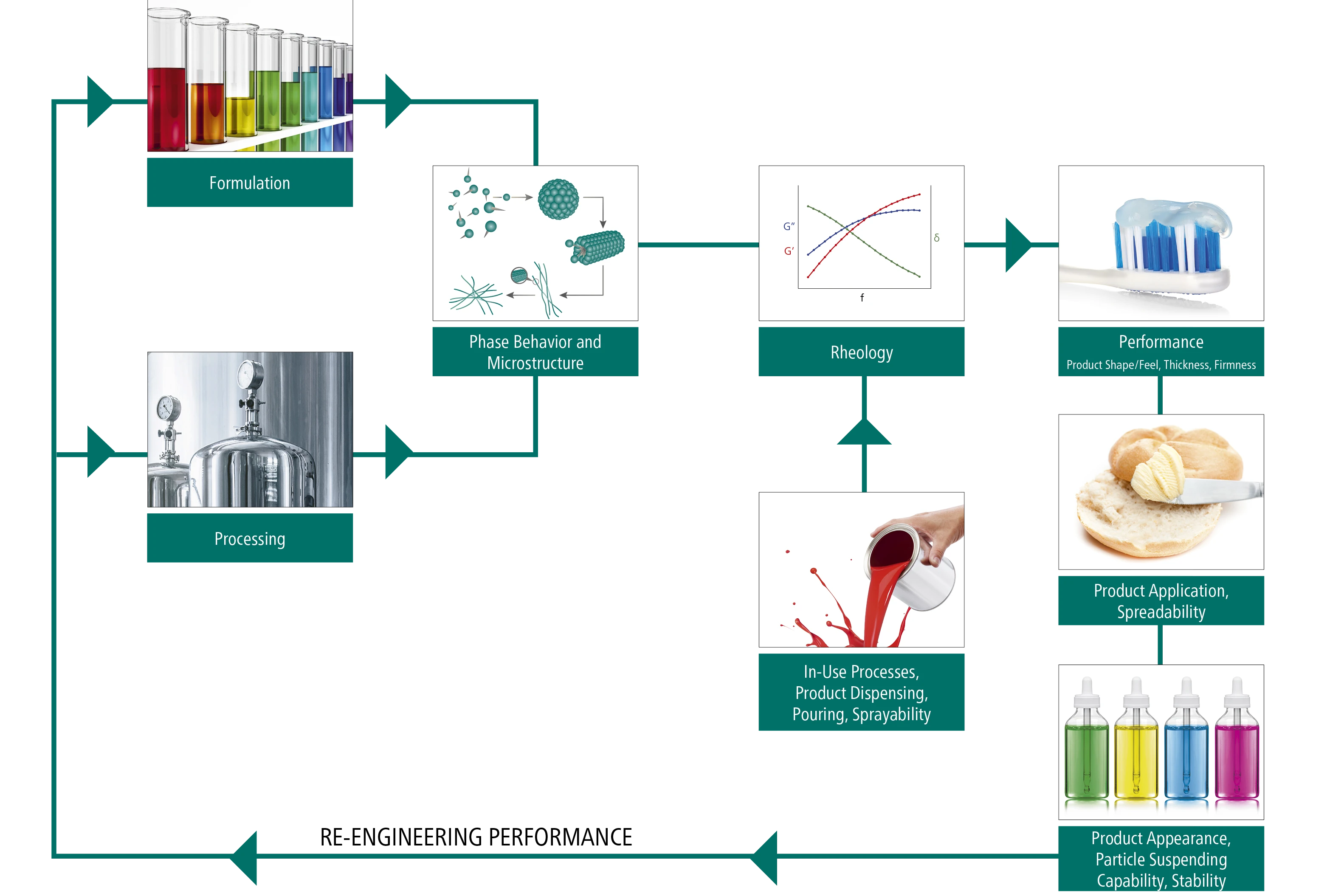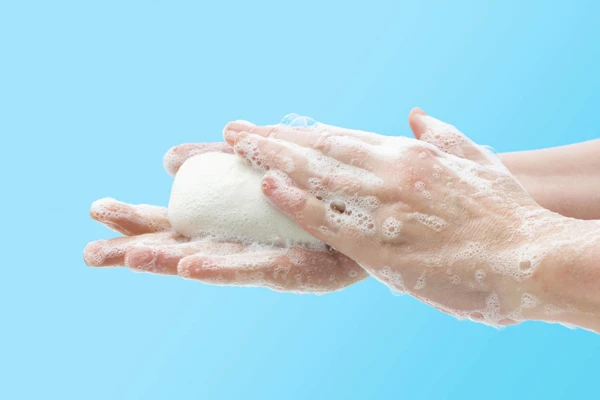
08.01.2024 by Dr. Shona Marsh
Using Rheology for Faster, Smarter Material Formulation
Rheology is often perceived as a theoretical, highly mathematical discipline but in fact, it has real practical relevance in defining the rheological behavior of a wide range of materials including, polymers, asphalt, cosmetics, foods, paints, inks, blood and much more.

Rheology is all around us and we are constantly performing rheological testing every time we apply a force to one of these materials, in order to deform or make it flow at the desired rate, be it squeezing toothpaste, spreading cement, or chewing food. The ratio of the applied force (StressStress is defined as a level of force applied on a sample with a well-defined cross section. (Stress = force/area). Samples having a circular or rectangular cross section can be compressed or stretched. Elastic materials like rubber can be stretched up to 5 to 10 times their original length.stress) to the measured deformation (StrainStrain describes a deformation of a material, which is loaded mechanically by an external force or stress. Rubber compounds show creep properties, if a static load is applied.strain) or flow rate (StrainStrain describes a deformation of a material, which is loaded mechanically by an external force or stress. Rubber compounds show creep properties, if a static load is applied.strain rate) is what governs such behavior and is related to the rheological material properties such as modulus (StressStress is defined as a level of force applied on a sample with a well-defined cross section. (Stress = force/area). Samples having a circular or rectangular cross section can be compressed or stretched. Elastic materials like rubber can be stretched up to 5 to 10 times their original length.stress/StrainStrain describes a deformation of a material, which is loaded mechanically by an external force or stress. Rubber compounds show creep properties, if a static load is applied.strain) or viscosity (StressStress is defined as a level of force applied on a sample with a well-defined cross section. (Stress = force/area). Samples having a circular or rectangular cross section can be compressed or stretched. Elastic materials like rubber can be stretched up to 5 to 10 times their original length.stress/StrainStrain describes a deformation of a material, which is loaded mechanically by an external force or stress. Rubber compounds show creep properties, if a static load is applied.strain rate), the knowledge of which can help predict how a volume of material will behave under a given force or deformation.

We qualitatively assess the modulus, elasticity or viscosity of a material through our senses when we physically touch a material.
However, we also make qualitative rheological assessments by sight, for example, we can often tell the differences in the rheological properties of two different Ketchup samples by the way they sit on the plate. Such assessments are subjective and in most cases cannot be quantified except by a comparative panel score which may grade different products by thickness, stringiness, TackinessTackiness describes the interaction between 2 layers of identical (autohesion) or different (cohesion) materials in terms of surface stickiness.tackiness and so on.
While such feedback is important, especially for the food and personal care industries, it is somewhat impractical in the early stages of product development where there are often a large number of formulation candidates. Therefore, objective metrics that reliably correlate with key aspects of product performance are extremely valuable.
Such objective metrics can be obtained using rheometry, and in particular rotational rheometry, where it is possible to measure both viscosity and viscoelastic properties of complex materials under conditions which are relevant to the application or process of interest. Key to the successful use of rheology is identifying the relevant parameters that correlate directly with the aspect of performance. Ensuring relevance requires careful consideration of the following issues:
- Which test should I apply?
- Which rheological parameters should I measure?
- What test conditions should be applied?
- How do I interpret the results generated?
- What does the data mean?
Such questions are not always easy to answer which is why significant consideration was given when developing the Kinexus Prime rheometer platform, where the aim was to make rheological testing readily accessible to the novice while still providing the advanced functionality and flexibility to the expert user. This was realized with the rSpace software which uses a Standard Operating Procedure (SOP) approach and built-in intelligence to provide support through every aspect of the measurement process; through sample loading, measurement, analysis and result interpretation. In addition to all the standard rheological tests, there is also a collection of dedicated rSolution measurements for benchmarking performance and material properties in relation to texture, spreading behavior, yield StressStress is defined as a level of force applied on a sample with a well-defined cross section. (Stress = force/area). Samples having a circular or rectangular cross section can be compressed or stretched. Elastic materials like rubber can be stretched up to 5 to 10 times their original length.stress, product delivery characteristics, formulation stability and even tack testing.
In summary, rheology is both a practical and important formulation tool which can give important insight into product microstructure and performance. Knowing which test to apply and how to make relevant measurements is the key to success and something NETZSCH’s rheology specialists are able to help with.
Learn more about our large product range of capillary and rotational rheometers:





